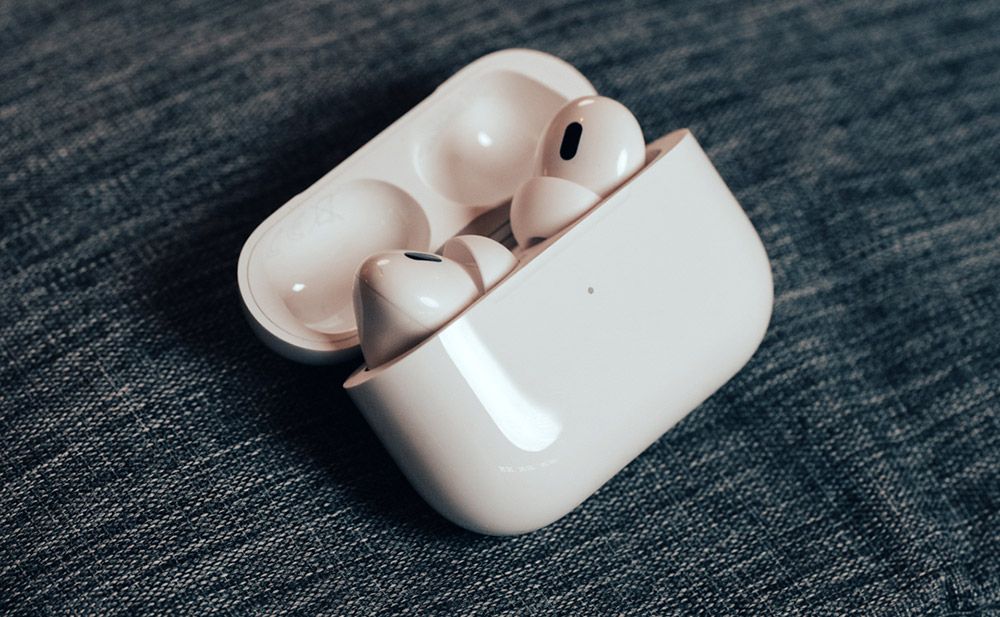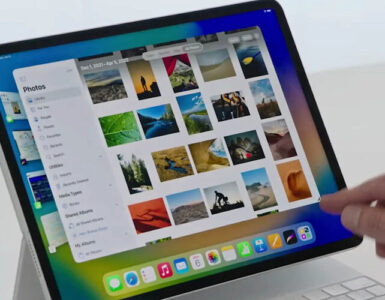Apple is known as a hardware company, but much of its reinvention in the last 20 years has also been around music, from iTunes to iPods, and while those have taken a backseat to the more popular iPhone and iPads, there is still the petite AirPods in-ear monitors range, first introduced in 2016.
Then in 2019, the American tech giant launched the AirPods Pro, a superior model with a more secure fit, active noise cancellation and a shorter stem for greater touch controls and it has now followed it up with the second generation model that looks and feels similar to the original, but now packed with more features that makes these one of the more incredible earphones you can buy.

Powered by an updated H2 processor with Bluetooth 5.3 connectivity, the AirPods Pro (2nd Generation) offers greater sound quality, improved noise cancellation, and longer battery life, as well as a new Personal Spatial Audio that easily transforms the way you enjoy music.
Spatial Audio isn’t new. It has been called many different names across various audio companies, but the premise remains the same – your ear, which channels sound waves into your ear canal differs from everyone else, and that means that what you hear is different from what someone else listens to, be it the sound of an engine, the voice of a singer, or the cries of a baby. And even that varies, depending on the original source’s proximity to you, such that the cries of a child won’t seem as piercing if the sound came from across the room, as opposed to right beside you. So what Spatial Audio does is to create a more immersive soundscape, of positioning a listener as if they were in the same space as the audio.
Say you’re watching a movie or listening to a concert – head tracking allows the software to continually place you in the middle of the room, to make the different audio envelop you, even when you move your head, to give you the sense of being there. Once the object of the sound moves away, it leaves gradually and your ears can identify the direction of the departure.
But that’s not the end of it because individual variations of the shape of our ears can also impact the way we hear something, so companies have tried ways and means to map the curve and structure of your ear, to recreate how we would listen to something as if we were standing right there, from a movie, a concert to the sounds of nature, and everything in between, and Personal Spatial Audio makes it more unique.
Depending on how convinced you are of the technology, the issue preventing personalised adjustments is that it typically requires the use of a camera and an app to determine the structure of both your ears, and it’s not always the easiest, or the most Creative endeavour to do on your own. Until now.
Apple has simplified things to a point where enabling Personal Spatial Audio is similar to enabling Face ID – simply turn on the app, look at the front camera, follow the on-screen instructions, turn your head for the camera to identify the shape of each ear, and you’re done. Of all the audio apps we’ve tried over the years, this is a simplified process that requires no extra effort.

Now, does it work? There is no doubt that 3D audio positioning technology works and has changed the way audio is directed to your ears, such that when it was retroactively introduced to the original AirPods Pro, the difference was amazing. But the difference between what works for everyone, and what’s meant to directly affect you isn’t that easily discernible. Case in point – when listening to music and watching shows on Netflix, the difference in audio was more easily identified, as Personal Spatial Audio offers a more immersive soundstage. The change was also obvious to another individual using the same AirPods with Personal Spatial Audio turned on. Does it mean using my profile was good enough? That would require a more extensive round of tests with more AirPods Pro units than what was currently available.
But despite the fun aspect of Personal Spatial Audio, the best part of the new AirPods are something more rudimentary – volume control. The short stem of the original offers touch controls for you to pause and play music, and nothing more but there have been many occasions where I would casually stroke the stem, in an attempt to lower or increase the volume. It never works, but the act is so instinctive, it’s almost ironic that Apple didn’t introduce it before but it has now. By resting the stem on your thumb, simply move a finger against the flat edge of the stem – up to increase the volume and down to lower it, and the gesture feels so natural, it’s as if the feature has always been available, though it’s actually new. The great thing is that this is not a slider, so there is no risk of sliding the volume too high – one slide moves the audio up or down by one level, giving you greater precision over the volume.

The charging case includes an Apple U1 chip that supports Find My tracking, and includes a speaker for locating and status updates. For those of us with the original AirPods Pro, the feature enables you to play a tone on the unit if the buds were placed in the case, or on either bud if they were not. However, the case itself would remain lost as it did not have a built-in speaker. The new model does and if the unit is split into three, you can trigger an audio cue on either buds, or on the case itself.
So how good is the new active noise cancelling? In a crowded room with dozens of people, the unit was able to drown out a majority of the noise, including chatter of those around you, and of the coffee machines running in the background. If you’re using an Apple Watch paired with the new AirPods, the Noise complication on the Watch can measure the audio levels of the environment, with noise cancellation turned on and off. We’re talking about a reduction of around 20 decibels, whereas on the original, the reduction was not as high. In the long run, users are not likely to use the Noise complication to continuously measure decibel levels, but it’s reassuring to know that there are instruments around you that can measure audio levels, and equipment to indicate how much can be drowned out when in use.

Battery life is another boon, with an improved six hours of listening use per charge, up from five hours previously. Talk time has also gone up by an hour, to 4.5 hours. The new case is able to provide up to 30 hours of juice, up from about 24 hours. Now, this differs if you turn on noise cancelling, but the increase in use case is definitely. With the new case, it now comes with a loop to attach a lanyard, which is great if you want to attach it to a cord for easy access. That said, the dimensions of the new case are almost identical to the original, so your previous AirPods Pro cases can be recycled for use here – though that means you won’t have access to that lanyard loop on the right side of the device, so you win some, and lose some.
In addition to Lightning, Qi and MagSafe chargers, you can now charge the unit with Apple Watch chargers, which allows for better cable management if you’re heavily invested into the Apple ecosystem.
At S$359, the AirPods Pro (2nd Generation) aren’t the cheapest in-ear monitors out there, but the extensive feature set, powerful complements to existing Apple hardware, as well as intuitive gesture controls, makes them a natural fit for Apple users.
GEEK REVIEW SCORE
Summary
After making us wait for four years, Apple’s new AirPods Pro might not be the game changer many are expecting, but there’s no denying the improvements that many will benefit from, including better battery life and stronger noise cancelling.
Overall
8.7/10-
Aesthetics - 9/10
9/10
-
Build Quality - 9/10
9/10
-
Performance - 8.5/10
8.5/10
-
Value - 8.5/10
8.5/10
-
Geek Satisfaction - 8.5/10
8.5/10













